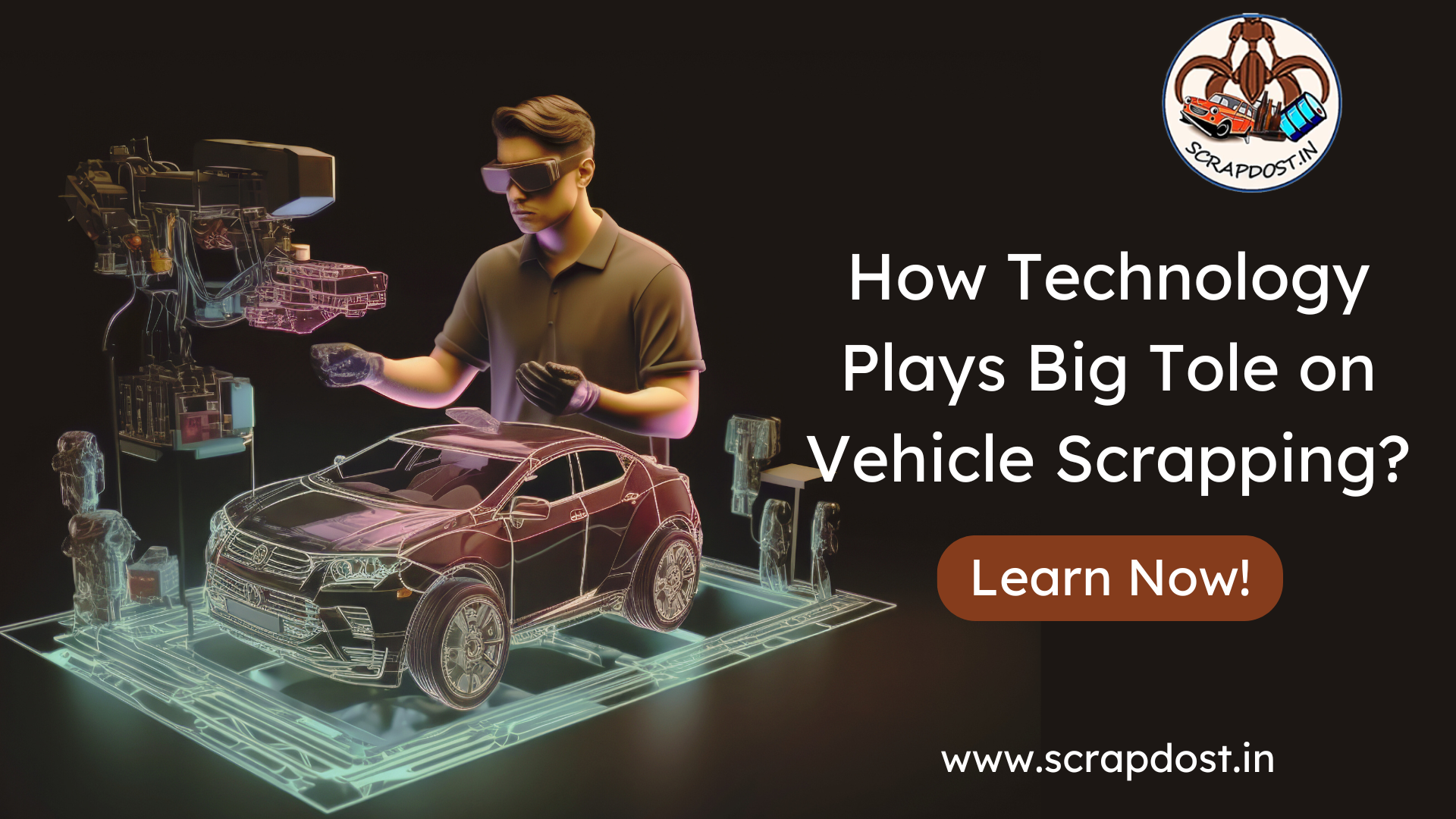The vehicle scrapping process, an essential part of the automotive lifecycle, involves dismantling old or unserviceable vehicles and recycling their components. This not only helps in reducing environmental pollution but also conserves valuable resources by reclaiming usable materials. Traditionally, vehicle scrapping has been a labor-intensive and time-consuming process. However, with the advent of modern technology, the industry is undergoing a significant transformation. In this blog, we will explore the pivotal role of technology in streamlining vehicle scrapping processes, making them more efficient, environmentally friendly, and economically viable.

An important factor that makes vehicle scrapping a difficult process is the volume of automobiles and parts that have to be processed. Using manual means may cause mistakes, waste a significant amount of time, and result in the loss of items. The problems highlighted above are solved by modern technology, including digital inventory management systems, as they offer a detailed real-time view of the available stock. These systems employ barcodes, RFID tags, and IoT sensors to track each component and optimize inventory levels.
In vehicular dismantling, there are several processes including removal of dangerous substances, selective disassembly of useful parts, and disposal of waste products. The use of technology has however ensured that this process is made more efficient. Some of the new era activities that have been made possible by advanced robotic systems are de-pollution which entails the removal of fluids and gasses, and the recovery of recyclable materials. It is equipped with advanced sensors and AI algorithms that help these robots know and work on different components safely without any likelihood of mistakes.
AI and ML technologies are transforming the vehicle scrapping industry. Automated technology may use data from vehicle mobility history, current state, and market trends to decide on the scrapping process. For example, AI can determine which components have the highest value and demand and inform the disassembly process. This makes it possible to get the most out of the vehicles in terms of profitability and longevity.
The collection of used vehicles for scrapping involves recycling as a key element in the process. With current advanced recycling techniques, there are better chances of yielding a large fraction of the materials from the scrapped vehicles. Some more efficient shredders and separators can reduce end-of-life vehicles into more manageable segments and categorize them according to materials such as iron, plastic, or glass. Additionally, methods like chemical recycling and pyrolysis deal with the non-recyclable waste streams and transform them into useful products like fuel and feedstocks for new products.
Another notable factor that influences the vehicle scrapping industry is the existence of environmental laws. Such regulations are followed with the assistance of technology in the form of tools for environmental monitoring and reporting. For example, emissions and waste output may be monitored by sensors and monitoring systems at the time of scrapping. Information harvested from these systems can be used to determine where changes can be made and the overall function of these processes should not violate any legal requirements. Also, technology can enhance the certification and documentation processes of regulation compliance to ease the scrapping facilities.
Blockchain technology can be very useful in the vehicle scrapping industry due to its ability to provide a transparent and immutable ledger for transactions and other processes. When each step of the scrapping process is captured in a blockchain, it is possible to justify the source, movement, and final destination of the scrapped vehicles and their parts. This makes it possible to reduce cases of fraud, meet regulatory requirements, and gain the trust of consumers and business entities. For example, consumers can be confident that their unwanted automobiles are disposed of appropriately, while firms can confirm that the recycled components are genuine.
One more important point is customer interaction and increasing public awareness of the value of scrapping vehicles. Advertising through social media networks and applications can help to make customers aware of the scrapping process, how it helps the environment, and what they can get out of scrapping their vehicles. They may also include additional services including a car valuation tool, booking pick-ups, and monitoring the scrapping process. As such, the use of technology allows more owners of the vehicles to engage in scrapping thus enhancing sustainability.
The scrapping process of the vehicles can be enhanced by data analytics. Data from the market, vehicle performance, or recycling results will serve as a basis for decision-making in the business operations. For instance, data analytics can assist in determining which types of vehicles are most profitable to scrap, what methods can be used to extract valuable materials, and the most optimal recycling processes. The use of this approach of data collection and analysis allows for optimization and flexibility where market conditions fluctuate optimizing the efficiency and profitability of scrapping operations.
Collaborative platforms and networks foster better cooperation between different stakeholders in the vehicle scrapping value chain. These platforms can be used to link scrapping facilities, recyclers, manufacturers, and regulatory authorities in the exchange of information, resources, and experience. For instance, manufacturers can offer design information that aids in the disassembling of the vehicles during recycling while the regulatory bodies can offer information on compliance and environmental laws. Thus technology aids in creating an integrated and efficient vehicle scrapping network through collaboration.
It is therefore evident that technology has a significant impact on vehicle scrapping processes. Some of the ways that the industry has been changed by technology include digital inventory management and automated dismantling, intelligent decision-making, and blockchain. Such advancements not only improve the effectiveness and revenue generation in scrapping activities but also support sustainability goals and legal requirements. It is, therefore, evident that as the market for vehicle scrapping expands, the four Ps will need to adopt technological solutions in order to stay relevant in the market. The following are the benefits that will be realized in the vehicle scrapping industry through the embrace of technology.
© 2025 ScrapDost